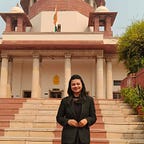Story of Ayodhya Verdict
Once upon a time, in the historic city of Ayodhya, there stood a disputed land that held within its soil a tale of centuries-old conflicts. It all began in the year 1528 when Babar’s commander, Mir Baqi, constructed a masjid to honor Babar. However, the locals believed that this mosque was built upon the ruins of a revered Ram Mandir, sparking tensions between Hindus and Muslims, leading to the first riots in 1853–1859.
To quell the unrest, the British government intervened and decided to divide the area into two parts. The inner part of the masjid would be reserved for Muslims, while the outer part would be used by Hindus. This compromise kept the peace for many years, but in 1885, a Hindu priest named Mahant Raghu Bir Das demanded the right to build a roof on the outer side for puja and worship.
Fast forward to December 23, 1949, when the situation escalated further as a statue of Lord Rama was placed inside the main part of the mosque, and Hindus began worshiping there. The government of India, to maintain control and prevent further clashes, imposed a complete ban on entry for both Hindus and Muslims. This led to a flurry of civil cases being filed in court to challenge the government’s decision.
In 1950, Mahant Ram Chandra Das filed a case seeking the right for Hindus to worship in the disputed land. The Nirmohi Akhara also filed a case in 1959, claiming possession of the area. Not long after, in 1961, the Sunni Waqf Board joined the legal battle, asserting their ownership rights over the Babri Masjid.
As the legal battles dragged on, tensions continued to mount. In 1986, the Faizabad court permitted Hindus to worship in the disputed area, leading to the formation of the “Babri Masjid Action Committee” by the Muslim community in protest. The following year, another case was filed by “Ram Lalla Virajman” demanding full ownership rights over the land.
In 1990, the situation took a volatile turn when Minister Lal Krishna Advani embarked on a Rath Yatra, a religious procession, from Gujarat to Uttar Pradesh, sparking riots across the country. As the situation worsened, the Uttar Pradesh government took control of the disputed land in an attempt to contain the unrest.
Tragically, on December 6, 1992, thousands of kar sevaks (religious volunteers) descended upon Ayodhya and demolished the Babri Masjid, replacing it with a makeshift temple dedicated to Lord Rama. Riots erupted all over India, and a commission led by Justice Liberhan was set up to investigate the responsibility for the mosque’s demolition.
The years that followed saw various governments proposing different solutions, including a shared space for both a temple and a mosque. However, disagreements persisted, leading to numerous appeals in the Supreme Court against the Allahabad High Court’s decision in 2010.
Finally, in 2019, the Supreme Court decided to attempt mediation to find a resolution. A panel was formed, and after 40 days of intense discussions, the case returned to the court. The court then reserved its judgment and requested the parties to submit their “Moulding of relief” if the court’s decision did not meet their expectations.
In the ancient city of Ayodhya, where the air was thick with the weight of history and faith, a long-standing dispute over a piece of land had reached its climax. The Supreme Court of India, after carefully listening to the arguments presented by the three parties involved, stood poised to deliver a momentous judgment that would shape the destiny of the contentious site.
With great wisdom and solemnity, the court declared that the ownership of the land could not be determined merely by popular sentiment or the reports of the Archaeological Survey of India (ASI). Instead, it would be decided based on legal principles and substantial evidence. The court noted that the historical facts and figures carried significant weight in the case, and relying on probability, it became evident that Hindus had been worshiping in the outer area of the site since 1857, thereby establishing their control over it.
Critically, the court expressed its concerns about the Allahabad High Court’s previous decision to divide the land into three parts, finding it unsustainable as none of the parties had sought such a remedy. The judgment emphasized that the title to the land could not be established solely based on religious significance, but rather through a thorough examination of historical evidence.
The court acknowledged that the Muslims’ right to worship in the Babri Masjid had been interrupted since December 1949, when the idol of Lord Rama was placed inside the mosque. It recognized the deprivation of their worship rights in the 400-year-old mosque.
Drawing upon its powers granted under Article 142 of the Indian Constitution, the Supreme Court aimed to right the wrongs and rectify the errors that had plagued this sensitive issue for decades. Finally, the historic judgment was delivered, marking a new chapter in the history of Ayodhya.
The court decreed that the land of Babri Masjid, covering 2.77 acres, would be given to Ram Lalla Virajman, thus recognizing the deity’s rights to the sacred space. Moreover, in an act of reconciliation and appeasement, the court directed that the Sunni Waqf Board would be granted 5 acres of alternate land by either the central or state government.
The judgment brought a sense of closure to the prolonged legal battle over the Ayodhya land. Hindus and Muslims alike contemplated the implications of the verdict, while the nation looked forward to a future where harmony and respect for each other’s beliefs would prevail. The journey of Ayodhya was far from over, but the Supreme Court’s verdict had set the course for a new beginning, one that aimed to heal the wounds of the past and pave the way for a more united future.
